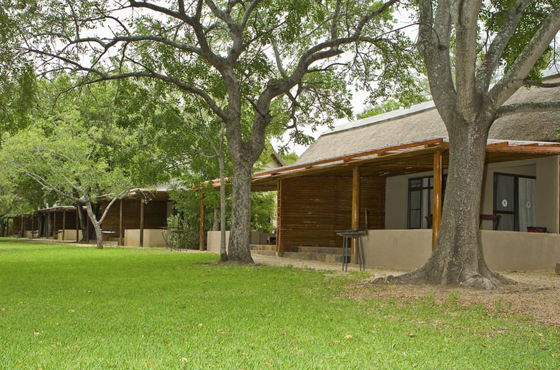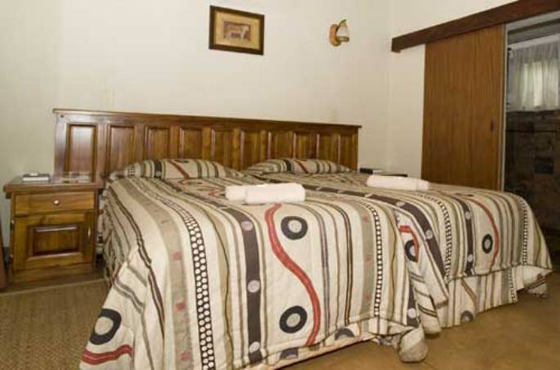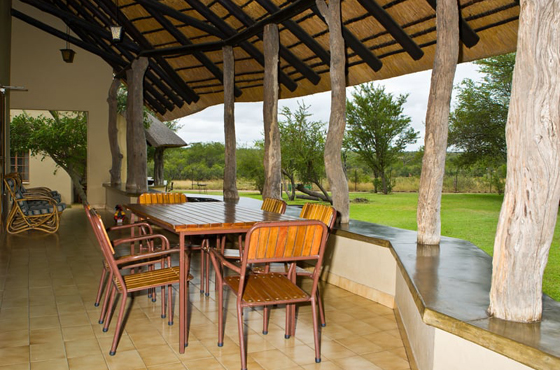
Whatsapp Us

Whatsapp Us

Orpen Rest Camp is located at the Orpen Gate entrance to the Kruger National Park. It is centrally located in the southern half of the park and is on the western border where it can be reached from the town Hoedspruit or the Bosbokrand area via Klaserie.
Orpen is a small camp and is situated within wide open plains with scattered trees, attracting browsers with its sweet grass. This in turn, attracts predators like cheetahs, lions and leopards. A wide variety of wild animals make their home in this area, making for spectacular wildlife viewing, especially at the waterhole close to the camp.
Rates are per night and exclude 1% community fund which will be added when booking.
| Accommodation Type | Base Guests | Base Rate | Additional Adults |
|---|---|---|---|
| Bungalow (BD2) Kitchenette |
2 | R 1,815 | N/A |
| Guest Cottage (GC6) Kitchenette |
4 | R 3,738 | R 641 |
| Accommodation Type | Base Guests | Base Rate | Additional Adults |
|---|---|---|---|
| Bungalow (BD2) Kitchenette |
2 | R 2,088 | N/A |
| Guest Cottage (GC6) Kitchenette |
4 | R 3,738 | R 641 |
15 Comfortable, free-standing thatched cottages offer accommodation to 4 to 6 persons, whereas the 6 Bungalows are connected to each other and have outdoor kitchen facilities. Two persons are accommodated in each of the Bungalows.
Take note that there are no restaurant facilities available at Orpen camp and guests should be prepared for self-catering. The shop provides basic supplies.
The bungalows are air-conditioned units, each furnished with 2 single beds. An en-suite bathroom with a shower, toilet and hand basin is available and there is a kitchenette on the covered veranda.
There is a dining table with chairs, fridge, 2-plate stove, kettle and cooking utensils on the veranda, as well as barbecue facilities. A maximum of 2 persons are accommodated in each of the bungalows.

A maximum of 6 persons are accommodated in the air-conditioned 2-bedroom Guest Cottages. Each of the bedrooms are furnished with 3 single beds and there are 2 bathrooms, one with a shower and toilet and the other with a bath and toilet. The kitchen is equipped with a fridge, hotplate, kettle, cookware and utensils.

An Information Desk is available at Reception where bookings can be made for activities offered at Orpen. Cutlery and crockery hampers are available for those guests staying in the facilities without kitchens. These can be used at the communal kitchens.
A shop provides basic supplies, including wood. A designated day visitor area is available where guests can enjoy a barbecue and picnic. There are also picnic sites at Timbavati and Ratel Pan, which is relatively close to the camp. As with most of the rest camps in Kruger Park, a filling station provides diesel and petrol.
A variety of facilities are provided at all the Main Rest Camps while amenities at the satellite camps are more basic and limited.
Ideally situated between Skukuza and Satara and offers food and refreshments. Gas Skottel Braai are available for hire and you can stock up on all the items that you forgot to bring.
Restaurants are available at all the Main Rest Camps. Boma Braais and Bush Braais are offered by some of the restaurants. This is a traditional South African barbecue offering three meats and a selection of salads and freshly baked breads.
The guided 4×4 trails allow visitors to get off the beaten track and explore territories of the park that are rarely seen. It is essential to travel with a 4×4 vehicle to minimise environmental damage and some of the trails have dongas or riverbeds that would make normal vehicles unfit for these trails, especially during the wet season. These trails serve as the gateway to a real wilderness experience in the park.
The world-class spa facility is situated in the heart of the Kruger National Park at Skukuza and captures the stillness of the bush, punctuated by birdsong and the rustle of leaves.
Most of the rest camps in Kruger offer guests the opportunity to take part in daily early morning and afternoon guided walks. Professional, experienced and armed field guides take groups of up to eight persons out of the camp’s boundaries to explore the surrounding wilderness areas on foot.
Ensuring the safety of the guests, these guides share their knowledge of the fauna and flora and to explain natural wonders, enriching their knowledge of the African bush and wildlife.
The walks are informative and relaxed and don’t take longer than
a few hours, focussing on the things not easily seen from a vehicle.
Being out on foot, an area is covered more intensely and guests are
able to experience nature using all their senses. Large game in the
area offers the possibility of encounters and the exhilarating experience
of approaching them on foot.
Several guided backpacking trails are conducted in the large wilderness areas, giving guests access to experience the park without constraints of a prescribed route. Stretching over a few days and nights the trails have no facilities and guests must carry their own equipment, food and water with them.
The combination of the Parque Nacional do Limpopo, Kruger National Park and Zimbabwe’s Gonarezhou National Park forms the Great Limpopo Transfrontier Park, covering a total of 3.7 million hectares.
This is one of the largest wilderness conservation areas in the world and provides the perfect opportunity for an adventure without boundaries which can be explored on a wilderness experience.
This exciting adventure destination is accessed from South Africa through border posts in Kruger located at Giriyondo, north of Letaba, or Pafuri in the north-east at Crook’s Corner. Access from Moçambique is via the Massingir dam in the south or Mapai in the east.
More than 500 different bird species have a home in Kruger National Park, some of them not to be found anywhere else in South Africa.
Numerous water points make for excellent birdwatching, while there are eleven bird/game-viewing hides in some of the camps and picnic sites in the park. Several more are earmarked for construction when sufficient funds become available.
Most species breed in summer when rains sustain most vegetation and food, but the larger birds of prey conversely breed during the dry winter, when their prey is most exposed.
Out of the 507 species of birds found at Kruger, 253 are residents, 117 non-breeding migrants, and 147 are nomads.
Some of the larger birds require large territories or are sensitive to habitat degradation. Six of these birds, which are basically restricted to Kruger and other extensive conservation areas, have been assigned to a fanciful grouping called the "Big Six Birds".
Bird hides are wooden shelters that overlook a natural dam or river. A fenced walkway with a door leads visitors from the parking area to the hide.
The structure is almost entirely enclosed, allowing a viewing gap with seats running along the opening from where the scene outside can be enjoyed. Identification posters and information on birds found in the area are displayed on the walls.
Some of these hides are in camps, and some are situated in an area where wildlife roams free. Keep this in mind when exiting a vehicle to enter the bird hide.
This list excludes in-camp hides that are in selected camps such as at
Bateleur, Punda Maria, Sirheni, Talamati, Tamboti and private hides at
Letaba for residents of Fish Eagle Guest House and at Shingwedzi for Rentmeester
Guest House.
Two of the birding hides are equipped with mattresses, bed linen, basic cutlery and crockery, and toilet facilities for those sleeping over. Reservations must be made in advance, and each group may only stay overnight for one night at a time. Note that there is no electricity at the hides, and the facilities are rustic and basic. Visitors must bring their own food, wood, and drinking water.
Kruger’s game drives are for guests who want to get closer to the wild side of nature and experience the Park’s animals up close.
Game Drives are offered at most of the rest camps and information is available and reservations can be made at reception at the camp.
Guests are transported in open vehicles and an experienced guide interprets the natural bush and offers insight into the ways of the Kruger Park. The duration of the Game Drives are approximately 3 hours.
Morning drives leave half an hour before official gate opening times, which vary according to the time of year, which means you will be the only guests driving around at that time. On the morning drive you will be able to enjoy the tranquillity of the Kruger National Park and watch the sunrise over unspoilt bush.
These drives leave the camp before dusk and return after sunset. Look out for grazers in the cool afternoon and predators starting their nightly hunts. Sunset is a time when night animals emerge and a drive during this period is the perfect opportunity to witness the beauty of the bush as it changes from day to night. Learn about fauna and flora from our expert guides and return to camp with a spot-lit night drive.
The only way to see nocturnal animals is by joining a night drive, which departs at either 19:30 or 20:00, depending on the time of year. These outings last for around two hours. Experienced and knowledgeable guides enlighten guests on these creatures of the night and their secretive activities. It is also a wonderful opportunity to view the star-filled Southern sky away from city lights.
Depending on availability, guests may book a game drive vehicle and driver for the entire day. Trained officials take visitors to sections of the park that are usually inaccessible to tourists.
A Bush Braai is an unforgettable experience not to be missed. A game drive leads you to an open area where burning lanterns and fires provide guests with the opportunity to listen to the sounds of the bushveld and the distant animals calling, while the food is grilled on open fires. A variety of game meat and sausages is on offer, accompanied by delicious vegetables and a variety of salads. Freshly prepared desserts and coffee or tea complete the delightful meal. A cash bar facility is available.
Two types of bush braais (barbecues) are offered:
Skukuza, the main rest camp of the Kruger National Park, has the wildest golf course in the world!
Staying in a rustic, primitive camp and experiencing the African bush on foot is an experience unparalleled by any other, bringing guests closer to the ultimate wilderness and wildlife destinations on the African continent.
Driving around in an open game drive vehicle and staying in a luxury lodge is not necessarily an authentic experience. Wildness, remoteness, tranquillity, peace and, to top it all, no other people, are offered to the more adventurous tourist!
Olifants Rest Camp is currently the only camp offering this activity which allows guests to explore Kruger’s environment on a mountain bike.
Because the Kruger National Park is located in the Lowveld region of South Africa, it is very hot during the summer months and even during most of the winter. To enable visitors to cool off in the heat, swimming pools are available at most of the rest camps. These pools are only available for camp residents, but additional swimming pools for day visitors are offered at the Skukuza and Letaba.
Well over 255 recorded archaeological sites - ranging from early Stone Age, roughly 1 million years ago, to various Iron Age settlements and recent historical buildings - hold cultural and spiritual importance, while others reveal an exciting and romantic history of the area.
The 19th century trading post of the famous Portuguese trader, Joao Albasini is found at the new Phabeni Gate, 10 km from Hazyview.
A late Iron Age site and trading place for the BaPhalaborwa, Venda and Portuguese - situated 12 km from the Phalaborwa gate on the road to Letaba Rest Camp.
With an estimated 1 500 lions, 17 000 elephants, 48 000 buffalo, 1 000 leopards and just over 2 000 rhinos inhabiting the Kruger National Park, sighting the “Big Five” is very possible when doing game drives.
Even though it should not be a prerequisite on a safari and sightings of specific animals absolutely happen on the luck of the draw, these animals are a huge attraction to visitors.
Kruger is one of the premier game-watching destinations in the world. Approximately 147 mammal species occur in the park. It is possible to see all the classical African big game, including elephant, black and white rhino, hippopotamus, giraffe, zebra, buffalo, warthog and many antelope species. Large carnivores include lion, leopard, cheetah, wild dog and spotted hyena. There are also many smaller mammals which are equally enticing.
Something else that became an attraction to wildlife viewing, is a group of insects known as the “Small Five”. This group includes the Elephant Shrew, Ant Lion, Rhinoceros Beetle, Buffalo Weaver and Leopard Tortoise.
Kruger National Park also supports packs of the endangered African wild dog, of which there are thought to be only about 400 left in the whole of South Africa.
More than 500 different bird species have a home in Kruger National Park, some of them not to be found anywhere else in South Africa. Numerous water points make for excellent birdwatching, while there are eleven bird/game-viewing hides in some of the camps and picnic sites in the park.
The Kruger Park is inhabited by 114 species of reptiles, including black mambas, African rock pythons, and 3,000 Nile crocodiles 34 species of amphibians are found in the park, as well as 49 fish species. A Zambezi shark, Carcharhinus leucas, also known as the bull shark, was caught at the confluence of the Limpopo and Luvuvhu Rivers in July 1950. Zambezi sharks tolerate fresh water and can travel far up rivers like the Limpopo.
219 species of butterfly and skipper are native to the park. The fastest and most robust of these belong to the genus Charaxes, of which 12 species have been recorded. Genera Papilio and Acraea are also well-represented, with about 10 and 15 species respectively. The total number of Lepidoptera species in the park is unknown but could be in the order of 7,000, many of which range widely in African savanna.